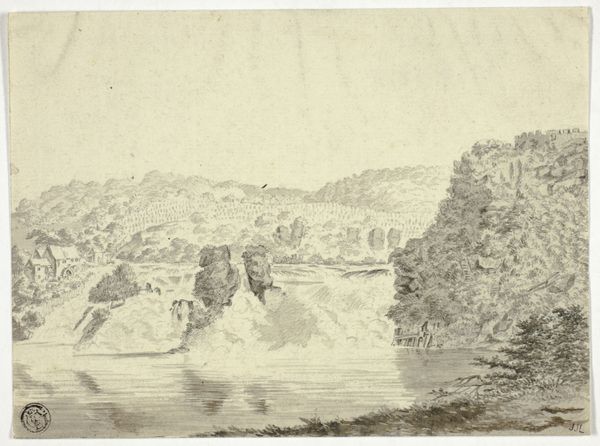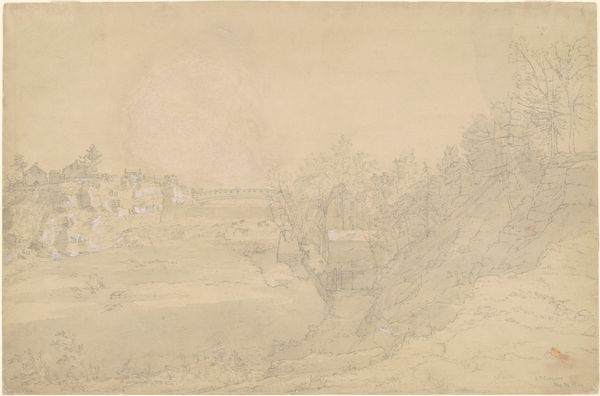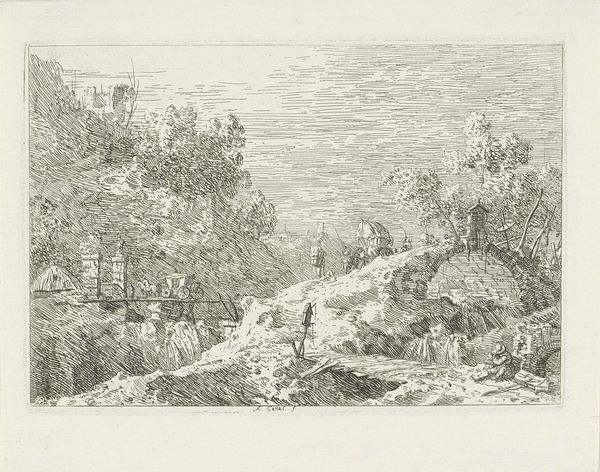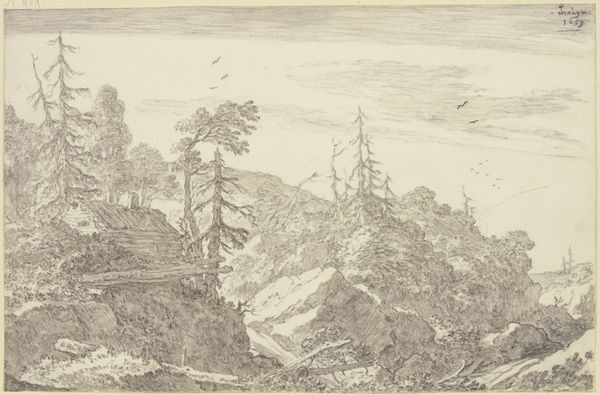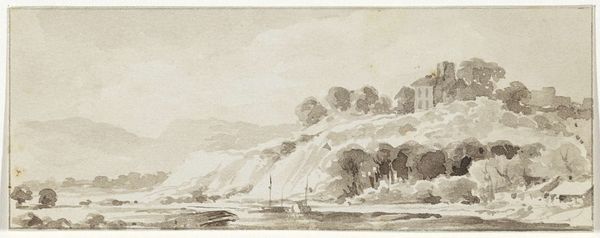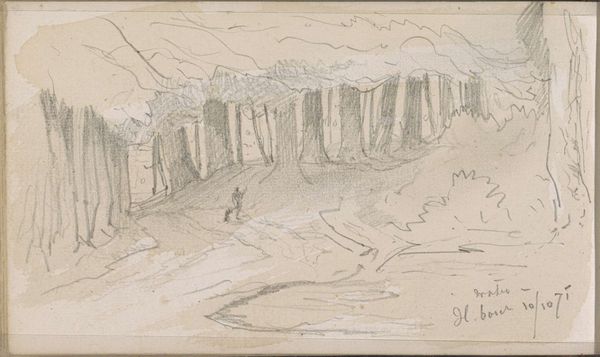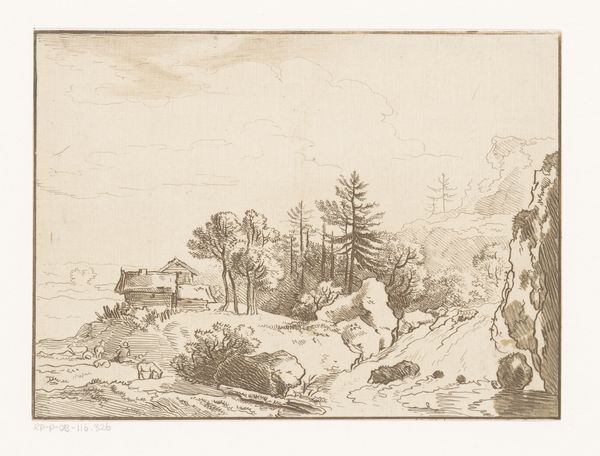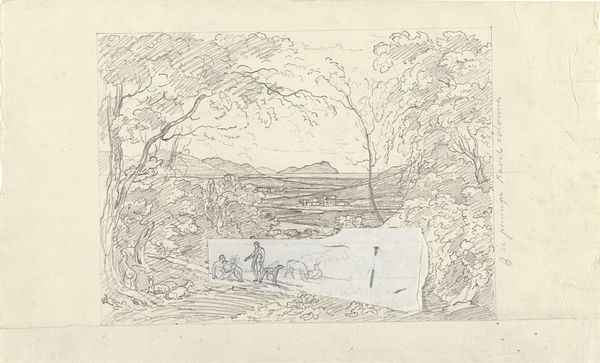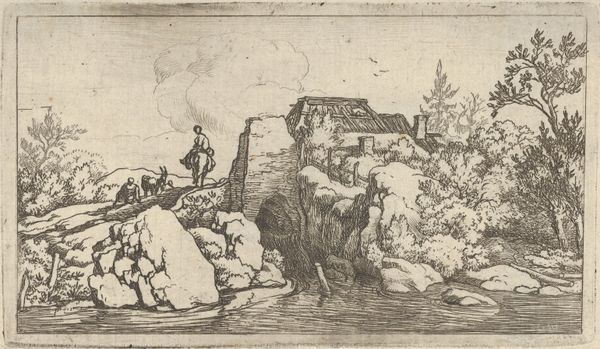
drawing, ink
#
drawing
#
baroque
#
landscape
#
ink
#
history-painting
Copyright: Public Domain
Curator: Welcome. Before us we have a drawing titled "View of an Ocean Bay" by Friedrich Wilhelm Hirt, housed here at the Städel Museum. It’s rendered in ink, presenting an expansive landscape scene. Editor: It feels quite dramatic, actually. There's something about the monochrome wash and the precarious bridge that suggests a journey or a crossing, almost biblical in scale but rendered quite delicately. Curator: Precisely. Hirt's landscapes were heavily influenced by the Baroque style, though it seems hard to date this piece definitively. What we're seeing is a blend of landscape and what could almost be history painting – suggesting a narrative embedded within the vista. Editor: You know, looking closer, it's fascinating to consider the ink itself – where it came from, how it was mixed. There is clear intentionality behind the varying saturations used to achieve atmospheric depth. How the means of distributing pigments creates narrative as much as the scenes depicted. Curator: A sharp observation. Ink, during this period, wasn't just a commodity; it was connected to networks of trade and knowledge. The artist is working within a specific economic and social context. This affects how the image would be viewed. Consider its distribution; intended for private collection, academic study, or perhaps even preliminary studies for larger works. Editor: Right. How labor informed it is interesting too. Notice the varying linework suggesting stages in production of this singular piece, from quickly mapped structural guidelines in pale dilute hues to deeper shadows carefully built up using repeated washes of a purplish grey tone. All the labour embedded. Curator: Definitely a compelling intersection of material and concept. The scene itself presents nature as something to be traversed, even dominated. A reminder of the social hierarchies being visually affirmed through art. The choice of rendering technique, readily available at this time, allows a controlled reproduction for a discerning viewership with sophisticated tastes. Editor: So true. Looking at it through a Materialist lens also brings forward something profound – how simple raw materials, a humble pigment and surface combined with physical movement result in this impactful image now presented at an institutional setting for the public to reflect on its power and complex roots in labor, extraction, or economy. Curator: Indeed. A landscape drawing, yes, but also a snapshot of social, political, and material histories intertwined. Editor: Food for thought! Thanks.
Comments
No comments
Be the first to comment and join the conversation on the ultimate creative platform.

